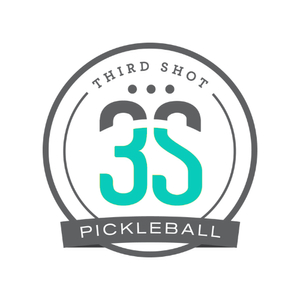As community centres, athletic clubs and local schools look to jump on the pickleball bandwagon, more and more people are providing organized instruction for new players. Here’s a quick guide as to how you can spend the first 20 minutes in a way that is safe, fun and effective.
Don’t…
- Begin with the history of the game. This uses up valuable practice time and while it may be interesting to some, I’ve never met a person who plays better or enjoys the game more because they’ve learned its backstory.
- Start with the rules. For new players, the fun part of pickleball is sending the ball back and forth over the net. Resist the temptation to explain all the rules right of the bat. For the first part of the lesson, I suggest you just stick to the following: “try to send the ball over the net”; “you can hit with one bounce or none”; and “if the ball lands outside the lines then it is considered out”. As your students start to get the hang of things, you can gradually add rules about the non-volley zone, the two bounce rule and the need to serve diagonally past the kitchen.
- Talk technique. One of the great things about pickleball is how easy it is to start playing at a basic level. And while technique is important, there is no need to inundate your students with technical tips right away. Give them the task of trying to rally and then let them give it a go. As they reach their own limits (usually two or three shots) they will be motivated to learn how to do it better. This also lets you, the instructor, identify your students’ starting points.
- Have them “shadow swing”. There is virtually no skill-transfer between what people do when they are pretending to hit a ball and what they do when the ball is really coming at them. So, skip the shadow swings and let them experience the real thing.
- Worry about scoring. Let’s face it, pickleball scoring and the serving rotations are complicated. This is especially so for new players who are still struggling to control the ball. If you must, introduce rally scoring (i.e. either team can win a point) and worry about standard scoring later. Nobody goes home and exclaims: “Guess what?! Today I learned how to keep score!”. Focus on hitting the ball and learning to control it.
Do...
- Learn everyone’s name — quickly. As the instructor, one of your jobs is to keep your students safe. If you don’t know your their names, it becomes much harder to get their attention when something dangerous is about to happen — especially from a distance when you can’t read a name tag. So whether it is with a memory trick or a pocketed cheat sheet, have their names memorized as fast as you can.
- Identify key safety rules. Make sure your students know the signal for “STOP” (a whistle works well) and understand that it is imperative they stop immediately when asked. Make sure people know what space is theirs (markers or cones are helpful for this) and what to do if balls are rolling at someone’s feet.
- Ask them to share with you (privately) any relevant health concerns that will impact their pickleball. You don’t need a whole medical history, but find our if there are any limitations or things to watch out for.
- Let them try to rally. People are excited to hit the ball and no matter how good a player you are, they’d rather try it themselves than admire you. Get them attempting to rally almost immediately and work from that starting point. They should spend most of the first twenty minutes playing and experiencing pickleball, not listening to someone else talk about it.
- Try throw pickleball. The hardest skill in pickleball is judging the ball and moving to it. If players struggle to rally consistently, consider getting them to play throw pickleball to develop their reception and movement skills. The can be done co-operatively (e.g. rallying) or with an element of competition. Even without a paddle, players can develop many of the tactical and technical skills important for playing successfully. As their judgement and movement improve, re-introduce the paddle.
- Focus on one skill at a time. It is easy to want to share all of your pickleball knowledge. In order to keep your students focussed and stress-free, just give them one thing to concentrate on. Praise them when they do it well (even if some other things are going wrong) and once they’ve become proficient, add something new.
Mark Renneson is the founder of Third Shot Sports. As a professional tennis and pickleball coach, he has logged more than 20,000 hours of teaching time and specializes in working with starting players. He can be reached by email mark@thirdshotsports.com and his weekly newsletterfeaturing videos, tips, tricks and more can be found at thirdshotsports.com/newsletter.
